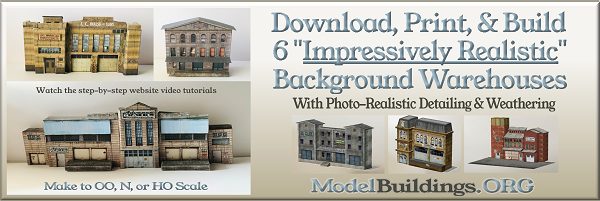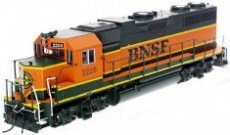Everything on model trains, model railroads, model railways, locomotives, model train layouts, scenery, wiring, DCC and more. Enjoy the world's best hobby... model railroading!
Why Does The Train Stop and Power Up Again?
Victor from New South Wales in Australia asks:
“I run one HO engine on my modest layout and want to know the probable cause of it running a short distance then stopping and powering up again, then doing the same thing a metre or so later. I don’t know enough about trains, but I don’t think it’s a dirty track problem. It was going ok when I last ran two months ago. Any thoughts please?”
Trains Derailing on Switches (Points)
Neville wrote:
“My trains are derailing on the switch frogs and wonder if it has something to do with the old cars I am running… the switch in question is fairly new. The curve into the switch rail is quite tight, and wonder if this could be compounding the problem? Advice please.”
How Much Is My Layout Worth?
Stan from New Jersey in the US writes:
“I know this site doesn’t run ads for buying/selling used train gear and layout, but am curious where is the best place to sell old layouts, trains, and accessories. Has anyone had any success with eBay or Craigslist? What would a 4ft x 8ft N scale Digitrax layout with 4 locos and 28 cars be worth? What about packing and shipping it? It all sounds too hard. My layout also has scenery and several plastic structures? Would like to hear from others who have sold layouts and gear for their guidance. Thanks in advance.”
Tutorial – How To Construct A Railway Freight Depot
This short video demonstration reveals how to construct a strong, yet lightweight, freight depot from card.
Plan available for download at https://www.modelbuildings.org/rail-yard-pack-deal-pack-deal/
BR Class 44 with Steel HMRG on Show in Tasmania, Australia
Barrie kindly sent in this photo to share:
“Here is a photo my own N scale 1:148 trains I photographed on the Hobart Model Rail Group layout, Tasmania, Australia. This photo is a British Rail, Class 44.”
Original Dining Car Orient Express D2419
Peter from South Africa writes:
“Attached is a copy of the dining car D2419 which I wrote about in my recent blog article which I thought the readers would love to see. According to the info it was made by a firm Poco maybe Poland.
This wagon Dining Car started its life as the original dining car for the first Orient Express going back to the early 1900s and when the WW 1 finished the Armistice was signed in her between France, England, and Germany and was mounted at Versailles France. Along came the WW 2 when Hitler signed the WW2 into operation and stolen the dining wagon 2419 D and used it as his command center on his special war command train until the end of the of WW2. Then according to the records this coach was pushed into a tunnel and burnt. The remains were only found later on but the French had an ace up their sleeve and had a similar coach and brought it out and renamed it 2419D and it is in Versailles today as far as I know. This information was obtained from a Video hunting Hitler shown here in South Africa.
Trust this gives you some info on the coach I use her on my 1930’s SAR trains as it color is what they called Imperial brown which blends in with the 1930’s passenger rolling stock of SAR trains
Cheers Peter Field RSA.”
Your Layout Photo
If you have a photo of your layout or a model railroading photo or diagram you would like to share – simply send the Blog Moderator a message using the ASK A QUESTION link below, and giving a few details about the photo/diagram you want to send for publication on the blog. We will then be in touch giving you an email address so you can forward it to us. Simple!


















